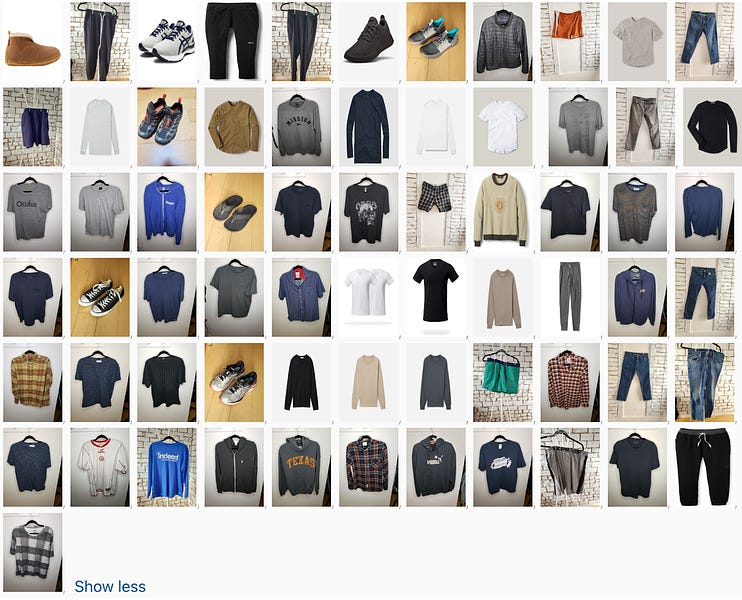
FAANG FIRE by Andre Nader
I tracked the cost per wear of all my clothes for an entire year with sewn on NFC buttons. What does this have to do with FIRE? Honestly, very little. But I did promise this newsletter would include “and anything else I can fit into a spreadsheet”.
For some reason it really bothered me not knowing how many times I have used a specific shirt. I wanted to know how often I wore something, the cost per wear, when I last wore it. It was just one of those small things that stuck in my head for a few years. Plus I wanted to be able to use the data to inform what type of clothes I wore most and understand when spending more on clothes might make sense.
Here is every single piece of clothing I wore last year sorted by total wears (excluding socks and underwear… because even I draw the line somewhere). Worth highlighting here that I worked from home all of 2021 and some other global event caused me to leave the house less.
The cost per wear is the retail price (retail in this case is typically what I paid or if it was a gift or company swag an estimate) divided by number of times worn in 2021. This is only counting 2021 wears and the majority of items were purchased pre-2021. Percent of weeks worn is looking at the weekly participation rate of a piece of clothing divided by the number of weeks it was owned. Or in english; what percent of weeks did I wear this item at least once.


















